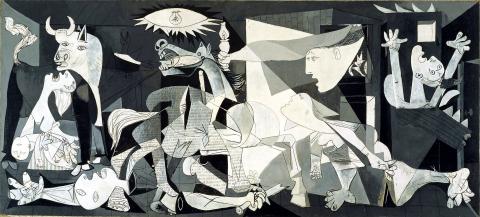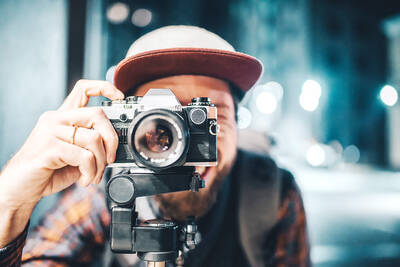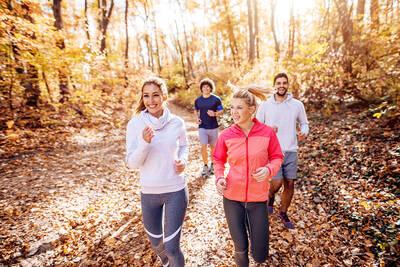Picasso’s Guernica, standing at almost 3.5 meters tall and 7.7 meters wide, depicts a scene from the Spanish Civil War. It shows the intense aerial bombardment of the town of Guernica in the Basque Country that happened on Apr. 26, 1937, carried out by the Nazi German Luftwaffe at the behest of the Franco government.
The canvas is filled with the chaos, screams and slaughter of people and animals, showing their contorted body shapes and features in a classic example of Cubism, a form that juxtaposes diverse aspects and planes of three-dimensional objects onto a two-dimensional painting, as with, for example, a pair of eyes represented incongruously together in profile.
The painting is less a depiction of an actual scene and more a cacophany of symbolic elements evoking the psychological impact of the violence of war, with the frenzied barbarism of the Spanish bull, the broken blade of a sword and the iconography of the pieta — the Virgin Mary holding the dead body of Christ in her arms — on the far left of the composition, the woman’s distorted facial features and breasts, her back, shoulders, neck and head exaggerated and contorted, conveying the primal, profound grief tearing through her. If dreams work in the language of symbolism, Guernica is like the shards of a nightmare reassembled onto canvas.

Photo: Wikimedia Commons
照片:維基共享資源
The history of art is dotted with denunciations of war, but Picasso has chosen here not to spatter his work with blood, and to instead employ understated black and grey tones, reining in the chaos, as if to suppress — and even mute entirely — the volume of the shrill cries. In so doing he has actually accentuated the terror.
When he was preparing for this piece, Picasso studied news photographs of the event. It is perhaps because of this that he decided to render this painting in a monochrome palette, adding the texture of newsprint, to evoke the feeling of a photojournalist’s report.
(Translated by Paul Cooper)

Photo: Wikimedia Commons
照片:維基共享資源
畢卡索的《格爾尼卡》以高近三點五公尺,長逾七點七公尺的畫幅,描繪西班牙內戰時期,巴斯克地區格爾尼卡城在一九三七年四月二十六日所受的地毯式轟炸,此為佛朗哥政府授意德國納粹軍隊所為的種族屠殺。
畫面中充滿了動態的、嚎叫的、瀕死的人與動物,其扭曲錯置的身形五官,是典型的立體派表現方式——把三度立體空間的多面向像比目魚的眼睛一般並置到平面畫幅中。
此畫並非描繪特定的場景,而是將戰爭暴力的心理衝擊,訴諸象徵元素:例如西班牙公牛的暴力野蠻、斷裂的刀劍,以及「聖殤」的圖像 —— 畫面左方的婦女抱著死去的孩子,她變形的臉部和乳房,她的背、肩、頸、頭部誇張地扭曲,傳達出最原始深切的哀痛。如果說夢是以象徵的語言運作,《格爾尼卡》便像是把夢魘的材料絞碎之後,再平貼到畫布上。
對戰爭的控訴,在藝術史上屢見不鮮。但畢卡索畫的不是鮮血淋漓,而是內斂的黑灰色調、抑制的騷動,似乎是把尖叫的音量壓低,甚至是靜音了,代之而起的卻可能是更令人怖懼的戰慄。
為了創作此作品,畢卡索研究了相關的新聞照片;或許這也是為什麼此幅畫全以黑、灰、白表現,其中並有如新聞紙的材質,如同另一種紀實攝影報導。
(台北時報林俐凱)

A ‘Dutch angle’ is a classic camera technique that has been used in filmmaking since the 1920s, when it was introduced to Hollywood by German Expressionists. Why is it called the Dutch angle if it’s actually German? In fact, it has no __1__ to the Netherlands. The term “Dutch” is widely believed to be a misinterpretation of “Deutsch,” which means German in the German language. In any event, the name stuck, and the Dutch angle remains a popular cinematic tool to this day. This technique involves tilting the camera on its x-axis, skewing the shot to create a sense of

A: After “God of Songs” Jacky Cheung sang for late singer Khalil Fong recently, music streaming service KKBOX also paid tribute to Fong by releasing his greatest hits online. B: The 20th KKBOX Music Awards ceremony is taking place at the K-Arena in Kaohsiung tomorrow. Fong performed at the ceremonies in the past. A: Who are the performers this year? B: The performers include Taiwanese groups 911, Wolf(s), Ozone, Singaporean pop diva Tanya Chua, and K-pop group Super Junior. A: South Korean stars actually took four spots among KKBOX’s 2024 Top 10 singles, showing that K-pop is still

Historians are rethinking the way the Holocaust is being presented in museums as the world marks the 80th anniversary of the liberation of the last Nazi concentration camps this month. Shocking images of the mass killings of Jews were “used massively at the end of World War II to show the violence of the Nazis,” historian Tal Bruttmann, a specialist on the Holocaust, told AFP. But in doing so “we kind of lost sight of the fact that is not normal to show” such graphic scenes of mass murder, of people being humiliated and dehumanized, he said. Up to this

Dos & Don’ts — 想想看,這句話英語該怎麼說? 1. 能做的事都做了。 ˇ All that could be done has been done. χ All that could be done have been done. 註︰all 指事情或抽象概念時當作單數。例如: All is well that ends well. (結果好就是好。) All is over with him. (他已經沒希望了。) That’s all for today. (今天到此為止。) all 指人時應當作複數。例如: All of us are interested in his proposal. All of us are doing our best. 2. 我們這麼做有益於我們的健康。 ˇ What we are doing is good for our health. χ What we are doing are good for our health. 註︰以關係代名詞 what 引導的作為主詞的子句,動詞用單數。如: What he said is true. 3. 大家都沿著步道跑。 ˇ Everybody runs along the trail. χ Everybody run along the trail. 註︰everyone 是指一大群人,但在文法上一般用單數。 4. 桌上有一本筆記本和兩支筆。 ˇ There were two